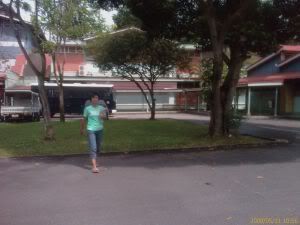Selene Cheng / Writer
 The Gurkha contingent has been ever present in Singapore’s landscape. Seen in Singapore especially since the early post-independence days, Singapore has relied on them for maximum security, especially when racial issues are concerned. Gurkhas were used to restore calm in Singapore society during the Maria Hertogh riots between the European and Malay communities, and the 1964 bloody riots between the Malay and Chinese communities that started on Prophet Muhammad’s birthday.
The Gurkha contingent has been ever present in Singapore’s landscape. Seen in Singapore especially since the early post-independence days, Singapore has relied on them for maximum security, especially when racial issues are concerned. Gurkhas were used to restore calm in Singapore society during the Maria Hertogh riots between the European and Malay communities, and the 1964 bloody riots between the Malay and Chinese communities that started on Prophet Muhammad’s birthday.
As a neutral, elite force known for “total discipline and loyalty”, Gurkhas today are deployed to protect important dignitaries and sensitive areas such as the Istana. Given their important role in making Singapore safe and secure, Gurkhas, as with other members of the Singapore Police Force, enjoy welfare benefits to ensure maximum operational effectiveness and efficiency. But how much welfare do they receive, and how is it accounted for? One concerned citizen shares with us his observations.
Police vehicles used for soccer training transport
On the morning of 20 April this year, Mr Anthony Neo spotted a police mini van transporting some children to the former Whitley Secondary School for soccer training. Later in the morning, he also saw a police bus waiting for the children at the school. The driver, a uniformed Gurkha officer, was there with the bus to pick up the children.
Concerned at what he saw as operation resources being misused for officer welfare, Mr Neo wrote to the police feedback unit on 24 April to highlight the incident and suggested that a private bus be used instead.
“No misuse of operation resources”
On 28 April, Mr Neo received a reply from one of the Police Force’s Quality Service Manager (QSM). The QSM said that he had checked with that Gurkha contingent unit, and clarified that “the police vehicle was used officially to transport the children for an approved Boys’ Club activity. There was no misuse of [the] police vehicle by the officers”.
 Mr Neo was disturbed. Why was a police vehicle being used for a Boys’ Club activity? And why was a police official on duty assigned to fetch the children? He wrote back to the QSM asking for clarification.
Mr Neo was disturbed. Why was a police vehicle being used for a Boys’ Club activity? And why was a police official on duty assigned to fetch the children? He wrote back to the QSM asking for clarification.
On 30 April, the QSM replied that he would bring the matter to the attention of his management and keep Mr Neo informed of the outcome.
Use of police vehicles an everyday affair?
Mr Neo discussed this issue with his family members and friends as he waited for the QSM’s reply. To his shock, they told him that they had seen family members of the Gurkha Contingent being transported in the same way to the airport, clinics and supermarkets.
Worried about what he heard, he wrote back to the feedback unit on 6 May to clarify if it was the official policy to do as such. Again, as with before, the QSM replied on 7 May that the matter was under investigation, and Mr Neo would be told when they got an answer.
12 May saw a reply from the QSM, who clarified that “transport for authorised group welfare activities was provided within strict guidelines for officers of the Gurkha Contingent and their families”, but did not include leisure activities like shopping trips, and if caught, offenders would be disciplined. The QSM further elaborated that official transport was also provided for hospital/polyclinic visits approved by the GC’s clinic, and also for the officers and their families travelling to the airport when they returned to Nepal on block leave.
The letter ended with the feedback unit “[noting Mr Neo’s] comments on the appropriateness of using police vehicles for welfare purposes and [the] Gurkha Contingent will review the practice”.
“We will review the practice”
Following the QSM’s reply, Mr Neo wrote several more emails to the Singapore Police Force on the above issue.
“I’m not against providing welfare to our Gurkha Contingent or even our Singapore Police Force. My question here is why are they provided using operation resources? Why [are they] not provided through the welfare budget? It is difficult for me to accept the practice no matter how strict the guidelines”, he said.
He also queried if other police force units enjoyed similar welfare perks.
The last reply to Mr Neo came on 10 June, where it was explained that “employees in the Singapore Police Force are provided a range of welfare benefits and amenities through the Police Welfare Division”, and that these were funded through a budget and a Police Central Welfare Fund which all employees contributed monthly to. Mr Neo was reassured that there were strict guidelines for the expenditure of the money, and that “safeguard mechanisms and processes, including audit checks by internal as well as external agencies, are also put in place to ensure the proper use of such welfare monies”.
As in the previous replies, Mr Neo’s concern that police vehicles were being used for welfare purposes was noted, and he was repeatedly assured that “this practice, whilst fully authorised, is nevertheless being reviewed”.
———-


